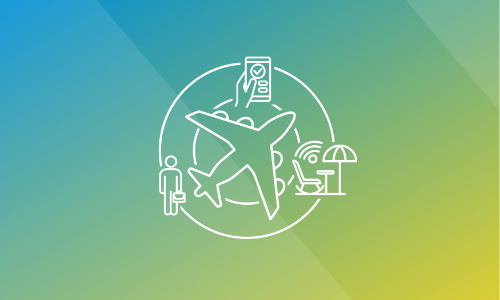Bleisure Travel: What It Is, and Why It’s Back

Why? They might be turning that business trip into bleisure travel.
What is bleisure?
Bleisure travel is the combination of business and leisure travel, and it can cover everything from taking a partner along on a business trip to using a conference as an excuse to book a few more days in a location for sightseeing and other leisure activities.
Before the pandemic, bleisure travel was reported to be on the rise; in 2019, a survey found that 75% of business travelers had extended their stay at a hotel for leisure purposes that year, and more than half brought guests with them.
While the pandemic put a stop to most travel in 2020, bleisure travel has been making a comeback. According to Expedia’s Traveler Value Index for 2022, 56% of workers who work remotely plan to engage in bleisure travel this year. In fact, Fortune Magazine suggests that bleisure travel may become more prevalent due to the pandemic; because more organizations put practices in place to support remote work, employees are using those those practices to work (and learn) from wherever they are — and sometimes that means they’re working from the beach.
Bleisure trips are also likely fueled by “revenge travel,” or the desire to take additional vacations now to make up for all the travel we missed during the pandemic. So if you’re sending workers out to a conference they might just take some extra time afterward to travel.
What does bleisure travel look like?
According to research from Expedia, the average bleisure traveler doesn’t just tack on a couple of extra days at the end of a business trip; they’re seasoned travelers who go on several trips a year, so when they book a bleisure trip they go big. Most bleisure travelers tend to book an equal or greater number of leisure days than work days on their trips. In fact most, bleisure trips last 6 days or longer.
That may be because the length of the business trip is a factor when workers are deciding to add leisure time to business travel; the longer the work part of the trip, the more likely a worker is to plan some vacation time.
If you’re sending employees out for development at conferences, they’re more likely to turn that trip into bleisure travel than if they were just headed out for a meeting; 43% of bleisure trips are built around conferences and conventions. This may be because so many conferences are in destination cities; if a conference is in an area with great food, sightseeing, or museums, there’s a good chance that trip will be extended, according to Expedia.
Is bleisure a good thing for your team?
After years of working from home and seeing other people via Zoom, your employees may be eager to travel. It’s hard to argue that some relaxing time off after a conference or meeting could be bad for your workers; they’re being productive and relaxing.
Supporting bleisure is also important after the Great Resignation, when people left their jobs in droves for reasons ranging from pandemic burnout to reevaluating the things that are most important in their lives. Being able to balance work with crossing a destination off a bucket list is a good way to support that, as is allowing families to join a worker on a business trip/vacation.
Despite this, there are some detractors. Fortune Magazine makes the point that bleisure travelers may be more likely to work on time they should be spending on vacation, and points out that company-subsidized leisure travel might be a problem if a manager feels it’s an invitation to interrupt the personal portion of a trip with a phone call or email.
All in all, however, it’s the individual employee’s call, and judging by the research, you’re likely to see quite a few bleisure trips on your team this summer.

